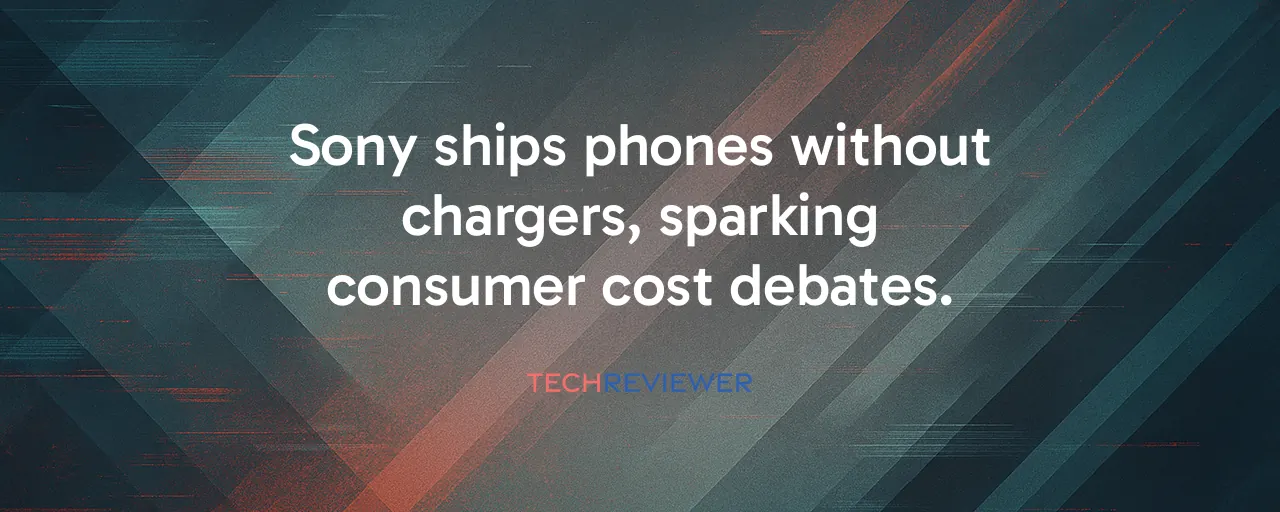Sony's Empty Box Experiment
When Reddit user Brick_Fish unboxed their Sony Xperia 10 VII in October 2025, they found a surprise: no charger, no USB cable, just the phone. The packaging's icons made it clear: this was intentional. Sony became the first major smartphone maker to ship a device without any charging accessories, following Apple's lead with its AirPods 4 and AirPods Pro 3, which also skipped cables. This move, catching many off guard, builds on a trend that started in 2020 when Apple dropped charging bricks from iPhone 12 boxes. Manufacturers claim it's about cutting e-waste, but the decision has sparked heated debates about consumer value and corporate profits.
The shift feels like a natural step after years of streamlining phone packaging. Back in the 2000s, phones came loaded with extras: chargers, headphones, even car adapters. Fast forward to 2025, and the industry's leaning hard into minimalism. Sony's bold choice signals where things are headed: a future where your new phone might arrive as a standalone device, leaving you to hunt for compatible accessories. But is this really about saving the planet, or just a clever way to boost margins?
The Push for Universal Charging
The backdrop to this trend is USB-C's rise as the universal standard. The European Union's mandate, effective December 28, 2024, requires all small electronics to use USB-C ports, from phones to earbuds. This standardization means one cable can theoretically charge your phone, tablet, or laptop, regardless of brand. Manufacturers argue that with USB-C's ubiquity, since Samsung and Apple adopted it widely by 2017, most people already own compatible cables. Why include another one in the box?
Apple's environmental reports add weight to the argument. By removing accessories from iPhone 12 boxes, the company cut carbon emissions by over 2 million metric tons annually, equivalent to taking 450,000 cars off the road. Smaller boxes also fit 70% more units on shipping pallets, reducing fuel use. Sony's Road to Zero plan echoes this, aiming for zero environmental impact. Yet, the math doesn't always add up. Chargers and cables make up just 0.1% of the 62 million metric tons of e-waste generated in 2022, suggesting the environmental win might be overstated.
The Hidden Cost of Cable-Free Phones
For consumers, the impact is immediate. A quality USB-C cable costs 15 to 30 dollars, a price that feels like a hidden tax on new devices. First-time smartphone buyers or those upgrading after years face the biggest hit, as they may not own a compatible cable. Reddit threads on the Xperia 10 VII show mixed reactions: some users shrug, citing drawers full of cables, while others fume over the added hassle and cost. Apple's AirPods move drew similar gripes, with buyers frustrated at needing to buy cables separately.
Then there's the quality issue. Not all USB-C cables are equal. Cheap, uncertified ones can cause slow charging, overheating, or even device damage. Research shows that substandard cables often fail UL 9990 safety tests, risking burnt pins or short circuits. With counterfeit cables making up 15% of online sales, the push to buy your own accessories raises the stakes. Security's another concern: malicious cables can hide electronics that log keystrokes or inject code, a growing risk as consumers turn to third-party sellers.
Lessons From Sony and Apple
Sony's Xperia 10 VII and Apple's AirPods offer a glimpse into this trend's ripple effects. Sony, a smaller player in smartphones, tested the waters with a full accessory removal, likely betting that its niche audience would adapt. The backlash on platforms like Reddit suggests they misjudged some buyers' expectations, especially those who see a complete package as part of the deal. Apple, with its massive market clout, took a softer approach, starting with AirPods before potentially scaling to iPhones. Their data shows over 2 billion power adapters already in circulation, supporting the idea that many users don't need duplicates.
Both cases highlight a key lesson: transparency matters. Sony's clear packaging icons helped set expectations, while Apple's quieter shift left some buyers blindsided. Another takeaway is the market opportunity. The mobile cable market, valued at 7.5 billion dollars in 2024, is projected to hit 12.3 billion by 2033 as accessory sales soar. But this also fuels a race to the bottom, with cheap cables flooding markets and undermining safety. Samsung, still including cables in its Galaxy S25 Ultra, shows that not all brands are ready to jump on board, creating uneven expectations.
Balancing Profit, Planet, and People
Manufacturers face a tricky balancing act. Cutting cables saves money, potentially hundreds of millions annually across 1.17 billion smartphone shipments, while opening revenue streams through accessory sales. Apple and Samsung already push official cables on their websites, priced at a premium. Environmental groups, however, question the green narrative. If consumers buy low-quality cables that break quickly, the waste could offset any gains from smaller boxes. The EU's directive, aiming to cut 11,000 tonnes of e-waste yearly, requires clear labeling to inform buyers, but it doesn't address cable quality or accessibility.
For users, the shift demands more research and spending. Wireless charging, used by 59% of smartphone owners in 2025, offers a partial workaround, especially in markets like China, where 73% embrace it. But wired charging remains king for speed and reliability. As brands like Sony and Apple push minimalism, consumers might push back, especially if regulators or advocacy groups cry foul over perceived price gouging. The next few years will test whether this trend sticks or if buyers demand a return to fully equipped boxes.
